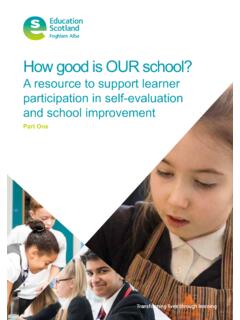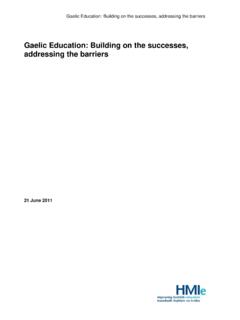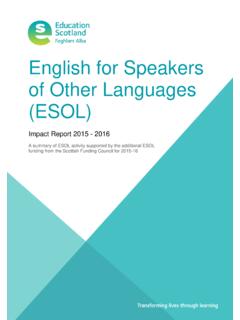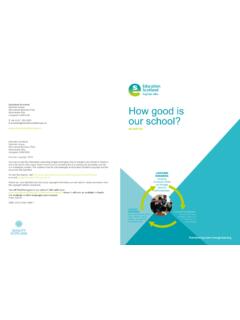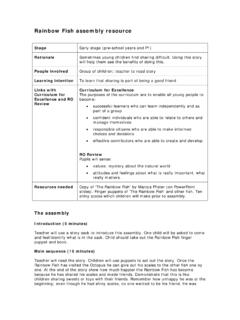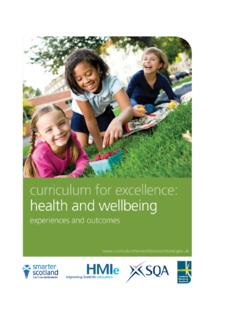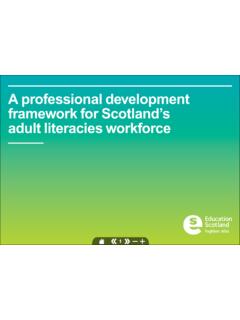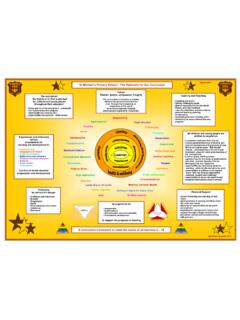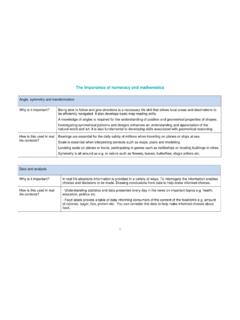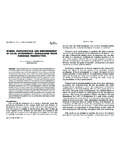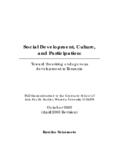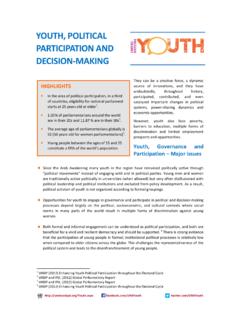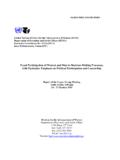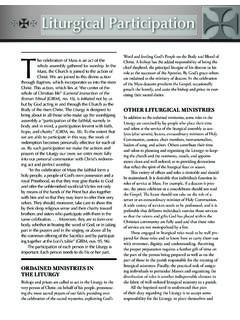Transcription of Learner Participation in Educational Settings (3-18)
1 Learner Participation in Educational Settings (3-18)IntroductionCurriculum for Excellence supports children and young people so that they can gain the knowledge, skills, attributes and capabilities which underpin the four capacities required for life in the 21st century. Children s rights, embedded in the United Nations Convention on the Rights of the Child, are at the heart of Curriculum for Excellence. These rights include, amongst others, the right to participate through dialogues with adults based on mutual respect, and the right to an education. In education Settings , children and young people need to be recognised more clearly as participants with rights alongside professionals and community members. Learner Participation is needed for Curriculum for Excellence s aims and purposes to be achieved across all contexts of learning.
2 Learner Participation is a key thread running through the How good is our school? (4th edition, hereafter, HGIOS?4) and How good is our early learning and childcare? (HGIOELC?) documents and is promoted as a key component within Scottish education schools and early learning and childcare (ELC) Settings , Learner Participation is core to a good education. As part of all Educational experience, it is young people s right to have a say in matters that affect them. Our vision is that in all schools and ELC Settings , all young people should have opportunities (i)learn about their right to participate voluntarily in decision making(ii)be enabled to participate through a variety of ways of expressing their views(iii)have a say in shaping Educational provisions in their setting and beyond(iv)learn through participating in decisions within a wide variety of educationalactivities and processes leading to meaningful impacts and outcomes(v)be involved in monitoring and evaluating young people s Participation and itsimpactsEffective Learner Participation means that a good education can become relevant, valuable, and supportive of achievement and attainment.
3 Teachers and school leaders are distinctively positioned to enable Learner However, recent research shows that education professionals need now to reflect and evaluate on how all arenas of school and early years life can better support Learner Participation . We must help young people understand and exercise their rights regardless of age, gender, ethnicity and background, and help them contribute in all kinds of decision making both locally and through linking to the wider guidance provides: A new definition of Learner Participation for Scottish education (ages 3-18) An evidence-based rationale and set of potential benefits of Participation Principles and practices for authentic Participation A four-arena framework for understanding and self-evaluationThere is also a set of support materials in association with this guidance (available on-line).
4 1 Defining Learner ParticipationPrinciples for Learner Participation : equal opportunities for inclusive, voluntary Participation respect for children and young people s rights and differences transparency and accountability in decision making intergenerational power sharing relevance of content, purpose and outcome3 Participation is inclusive and respectful As a human right, the Participation of learners in decision-making is more than a reward that is won or a privilege to be given on the grounds of class, religious persuasion, ethnicity, gender or background. All children and young people including those with disabilities, minority groups, and those in need of support for learning are afforded both the right to an education and the right to have a say in shaping that is transparent and involves power sharing Learner Participation amounts to more than adults merely listening to young people some form of intergenerational dialogue is required.
5 Intergenerational dialogue requires adults, children, and young people to engage in communications which are two-way, voluntary, sustained, deal with real concerns, and be based on mutual respect and children s rights. Through Participation , staff, learners, and other community members will plan and act together. Participatory dialogues can involve individuals or is relevant, authentic and consequential For Participation to be relevant and authentic, participatory dialogues must be influential and consequential rather than tokenistic. Effective Participation should lead to new practices, relations and meanings. The processes and outcomes of these actions should be monitored in ways that include young people . Using the principles of Participation in practice:In order to ensure that these principles are fully embedded in practice, any initiatives involving Participation should include: safe and child-friendly approaches training and capacity building for adults and children and young people involvement of children and young people in all relevant governance practices liaison and dialogue with relevant and influential adults involvement of young people in internal and external monitoring and evaluation ofprogress feedback mechanisms for all children and young people and the wider publicIn the use of this guidance, schools and ELC Settings are encouraged to refer to:The 7 Golden Rules of ParticipationThe 7 Golden Rules VideosHow Good Is Our School?
6 How Good Is Our Early Learning and Childcare?Getting It Right For Every ChildDefinitionLearner Participation in schools and ELC Settings includes all of the ways in which children and young people engage in practices and dialogue with Educational staff, parents, carers, and community members to create positive outcomes and and Benefits of Participation Effects and Benefits There is now considerable evidence from research that supports the view that addressing Learner Participation makes for effective policy making, enhances school life, and improves a range of outcomes for learners. A recent Scottish study4 has shown that schools achieving better than expected exam results, given their catchments in areas of deprivation, were all making comprehensive efforts to address Learner Participation across school many studies, we can say the main evidenced effects5 of enhancing Learner Participation are.
7 Improved pupil-teacher, child-staff, and peer-to-peer relations improved wellbeing improved teaching and learning improved guidance and support a better school ethos and greater sense of a shared community a reciprocal sense of feeling valued, trusted and respected development of life skills such as teamwork, problem-solving, and citizenship improved engagement, empowerment, and commitment to education improved achievement and attainment an addressing of the attainment gap between learners from more and less deprivedbackgroundsDepending on the particular Settings and approaches taken, a wide range of targeted improvements can be generated. Some examples of areas where Learner Participation can have an impact include: school building and estates design human rights awareness links between school and community staff appointment processes violence prevention initiatives learning, teaching and assessmentInvolving learners in decision-making can bring a sense of legitimacy to decisions, policies and practices since they are not being imposed hierarchically from above.
8 Learner involvement can help to bring fresh, new perspectives and ways of addressing a whole range of issues across school effects of Learner Participation are not limited to outcomes for young people or their attainment and achievement. Through taking a participatory approach, power is shared and consequential intergenerational dialogues become embedded in how the school or ELC setting in Learning, Teaching, and Assessment in Opportunities for Personal Achievement in Decision Making Groups in connection with the Wider CommunityFour Arenas of P articipationThe Four Arenas of Participation provides a framework to help us understand and develop when, where, and how learners can have a say in schools and ELC Settings . Recent research in Scotland in high-achieving schools serving deprived areas has shown that, in order to do well, learners valued and availed of opportunities for Participation in all four four arenas are indicative of the main overlapping emphases in Learner Participation in school or ELC Settings .
9 As the diagram shows, all arenas are inter-linked: for example, a pupil-led group could decide on possible destinations for an international trip. Similarly, dialogue with community members about an environmental issue could lead to a curriculum project about sustainability. Importantly, Learner Participation will not be limited to the work of formal pupil councils but will be richly and deeply experienced across the four arenas by all children and young people . Learner Participation must not be considered as an add-on but be experienced as intrinsic to everyday ways of working. 4 The first arena of Participation concerns learning, teaching, and assessment. This comprises Educational experiences that can happen in, for example: classrooms playrooms sports and performance spaces science laboratories libraries outdoor Settings and other studios, workshops and learning spacesIn this arena, all young people have opportunities to influence and participate in decisions about the approaches taken, the topic, content, timetabling, sequence, structures and emphases in how they learn, are taught, and Participation , learners will exercise a key role in actively supporting curriculum making within Curriculum for Excellence through on-going dialogue with teachers and Arena 1: Learning, Teaching, and Assessment5 Opportunities for personal achievement constitute the second arena of Participation .
10 Schools and ELC Settings routinely offer a diverse range of learning experiences such as: volunteering award schemes visits and visiting speakers sports events: as player, coach or supporter enterprise, fund-raising, and developing the young workforce public performances of music, dance, theatre competitions other school or school-community eventsThrough dialogue with adults in this arena, learners can influence a variety of important decisions. Opportunities for personal achievement can be shaped, designed or initiated by young people themselves or may be provided in collaboration with teachers, community groups, non-governmental organisations and other Through engagement in this arena, young people are able to significantly influence school ethos and Arena 2: Opportunities for Personal Achievement6 The third arena involves Participation in many kinds of decision making groups.
